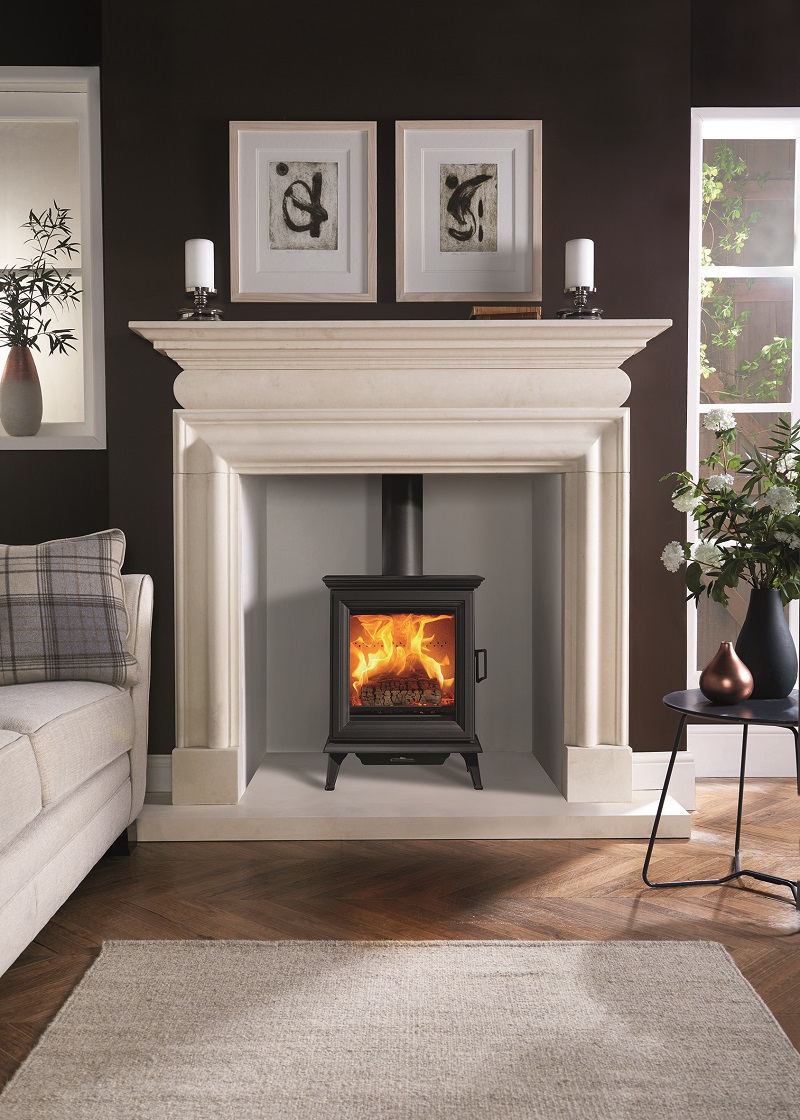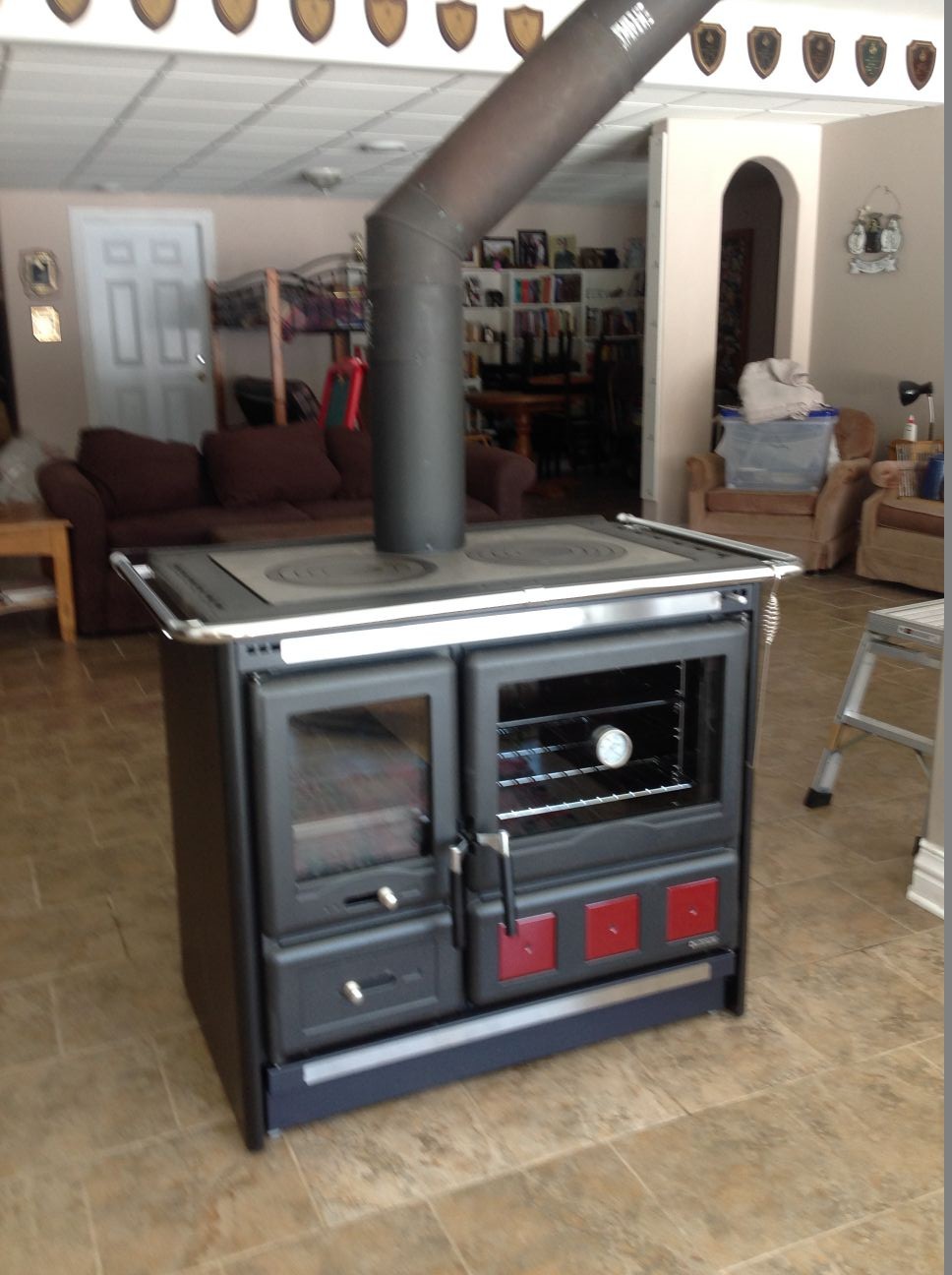Cast iron wood stove fireplace inserts combine timeless craftsmanship with modern heating efficiency. These heavy-duty units fit directly into existing fireplaces, transforming them into powerful heat sources. The cast iron construction absorbs and radiates warmth long after the fire burns out, making them ideal for sustained heating. Unlike traditional open fireplaces that lose much of their heat up the chimney, inserts create a sealed combustion system that maximizes energy output. Their classic, rugged appearance adds rustic charm to any home while providing superior functionality.
One of the biggest advantages of cast iron inserts is their exceptional heat retention. The dense material slowly releases warmth, keeping rooms comfortable for hours. Many models feature airwash systems that keep the glass clean, allowing an unobstructed view of the flames. Advanced designs include secondary combustion technology, which burns smoke particles for increased efficiency and reduced emissions. With heating capacities ranging from small spaces to entire homes, these inserts offer flexibility for different needs. Their durability ensures they can withstand decades of use with proper maintenance.

Installing a cast iron wood stove insert requires careful planning to ensure safety and efficiency. The unit must fit snugly within the fireplace opening, often requiring a custom-sized liner for proper venting. Professional installation is recommended to address clearance requirements and chimney modifications. Many inserts come with blowers that distribute heat more evenly throughout the room. Before purchasing, measure your fireplace dimensions and check local building codes for compliance. Proper installation not only optimizes performance but also reduces the risk of chimney fires or carbon monoxide leaks.
Maintaining a cast iron wood stove insert is straightforward but essential for longevity. Regular ash removal prevents buildup that can hinder airflow and efficiency. The glass door should be cleaned with a specialized cleaner to maintain clarity. Annual chimney inspections and creosote removal are crucial to prevent blockages and fire hazards. Cast iron surfaces can be treated with high-temperature paint to prevent rust if the finish wears over time. Gaskets around the door should be checked periodically and replaced if worn to maintain an airtight seal.

These inserts excel in energy efficiency compared to traditional fireplaces. By sealing off the fireplace opening, they prevent warm indoor air from escaping up the chimney. Many models achieve efficiency ratings of 70% or higher, meaning more heat stays in your home. Some homeowners report significant reductions in heating bills after installation. The ability to control airflow allows for precise temperature management, burning wood more completely with less waste. In power outages or emergencies, they provide reliable heat without electricity, adding valuable self-sufficiency.
Safety features make cast iron inserts a smart choice for family homes. The sealed design contains sparks and embers, reducing fire risks. Many include cool-touch handles and protective barriers to prevent burns. Properly installed units minimize smoke backdraft into living spaces. Look for EPA-certified models that meet strict emissions standards for cleaner burning. Children and pets are safer around these enclosed systems than open flames. Always use a fire screen if leaving the insert unattended, even with the door closed.

The aesthetic versatility of cast iron inserts suits various decor styles. From ornate Victorian patterns to simple, modern lines, options exist for every taste. Some feature enamel coatings in colors like black, cream, or even bold reds. Decorative elements like nickel accents or intricate door designs elevate their visual appeal. Unlike steel inserts, cast iron develops a unique patina over time, adding character. Many homeowners enjoy accessorizing with matching tool sets, log holders, and hearth pads for a cohesive look.
Cost considerations for cast iron inserts vary based on size, features, and installation needs. Basic models start around 1,500,whilehigh−endversionswithadvancedtechnologycanexceed4,000. Installation costs typically add another 1,000−3,000 depending on chimney modifications. While not the cheapest option upfront, their durability and efficiency provide long-term savings. Some energy companies offer rebates for EPA-certified models. Compared to the ongoing costs of gas or electric heating, wood-burning inserts can be economical over time.

Environmental benefits make these inserts appealing for eco-conscious homeowners. When burned properly, wood is a carbon-neutral fuel source. Modern inserts produce minimal particulate pollution thanks to efficient combustion designs. Using locally sourced firewood supports sustainable forestry practices. The longevity of cast iron means less frequent replacement compared to other materials. Always burn seasoned hardwood to maximize heat output and minimize creosote buildup. Some areas have burn bans during high pollution periods, so check local regulations.
For those considering a cast iron insert, proper operation ensures optimal results. Start with small fires to gradually heat the mass before adding larger logs. Keep the air controls adjusted to maintain clean, efficient burns. Never overload the firebox, as this can damage the unit and create excessive heat. Keep flammable materials at least three feet away from the insert. Consider installing carbon monoxide detectors nearby for added safety. With proper use and care, a cast iron wood stove insert becomes a reliable, beautiful centerpiece that delivers warmth and ambiance for generations.

Regency Hi2450 Medium Wood Burning Insert Wood burning insert, Wood burning fireplace inserts

Wood Burning Cook Stove La Nordica “Rosa XXL”

Related Posts: